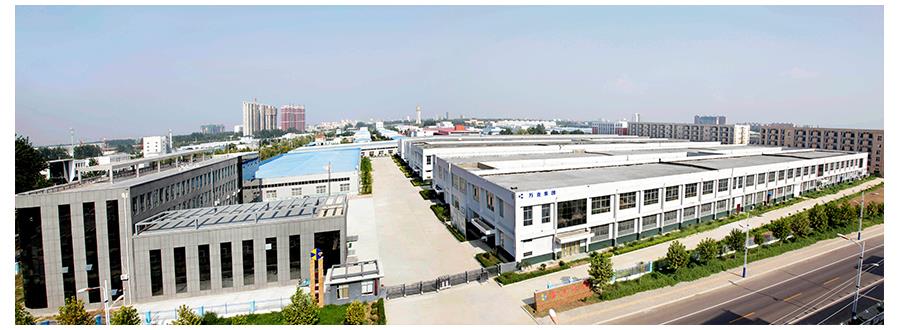How to Choose the Hardness of the Diamond Grinding Wheel?
-2023-01-30 15:48:34 -
The diamond grinding wheel is a bonded abrasive that consolidates abrasives into a certain shape (mostly circular with a hole in the center) and has a certain strength. It is generally composed of abrasives, binders, and pores. These three parts are often called the "three elements" of bonded abrasives.
Next, we will talk in detail about the aspects of diamond grinding wheel hardness selection.
The hardness of abrasive grains is conventional hardness, that is, the ability to resist local plastic deformation, which refers to the hardness of the abrasive material itself.
The hardness of the grinding wheel refers to the firmness of the bonded abrasive grains, which can also be said to be the ability of the abrasive grains to fall off from the grinding wheel. If it is easy to fall off, it means low hardness, and if it is not easy to fall off, it means high hardness.
Because the abrasive grains will be blunt, to a certain extent, these abrasive grains are useless.
These useless abrasive particles should be able to fall off automatically under the action of cutting forces to ensure the sharpness of the grinding wheel. The ability to fall off is to keep the sharpness of the grinding wheel and the durability of the grinding wheel to take a balance point according to the characteristics of the workpiece. Generally, the hardness of the grinding wheel is inversely proportional to the hardness of the workpiece.
Use soft grinding wheels for hard workpieces, and hard grinding wheels for soft workpieces.

A softer diamond grinding disc should be used for grinding hard metals because the sand grains are easy to blunt at this time, in order to be able to self-sharpen in time, a softer grinding wheel should be used. Harder grinding wheels should be selected to maintain grinding performance.
But when grinding very soft materials, softer grinding wheels should be selected.
Here we can correctly choose the resin bond grinding wheel or the CBN grinding wheel, according to our own needs.
The selection of the hardness of the grinding wheel should be appropriate, and it should also be considered comprehensively according to the size of the contact area between the grinding wheel and the workpiece, the shape of the workpiece, the grinding method, the cooling method, and the type of bonding agent for the grinding wheel.
The selection principle of diamond grinding wheel hardness is for reference:
a. When grinding soft materials, choose harder, grinding wheels, and when grinding hard materials, choose soft grinding wheels;
b. When grinding soft and tough non-ferrous metals, the hardness should be selected softer;
c. A softer grinding wheel should be selected for grinding materials with poor thermal conductivity;
d. When the end face grinding is compared with the circumferential grinding, the hardness of the grinding wheel should be softer;
e. Under the same grinding conditions, the hardness of the resin bonded grinding wheel is 1~2 grades higher than that of the vitrified bonded grinding wheel;
f. When the rotation speed of the grinding wheel is high, the hardness of the grinding wheel can be selected from 1 to 2 small grades;
g. Grinding with coolant is 1~2 grades harder than the hardness of the grinding wheel during dry grinding.
h. In mechanical processing, the hardness range of the commonly used grinding wheel is generally H-N (soft 2-medium 2)

Next, we will talk in detail about the aspects of diamond grinding wheel hardness selection.
1. The difference between the hardness of the abrasive grain and the diamond grinding wheel
The hardness of abrasive grains is conventional hardness, that is, the ability to resist local plastic deformation, which refers to the hardness of the abrasive material itself.The hardness of the grinding wheel refers to the firmness of the bonded abrasive grains, which can also be said to be the ability of the abrasive grains to fall off from the grinding wheel. If it is easy to fall off, it means low hardness, and if it is not easy to fall off, it means high hardness.
2. The significance of the concept of hardness
Because the abrasive grains will be blunt, to a certain extent, these abrasive grains are useless.These useless abrasive particles should be able to fall off automatically under the action of cutting forces to ensure the sharpness of the grinding wheel. The ability to fall off is to keep the sharpness of the grinding wheel and the durability of the grinding wheel to take a balance point according to the characteristics of the workpiece. Generally, the hardness of the grinding wheel is inversely proportional to the hardness of the workpiece.
Use soft grinding wheels for hard workpieces, and hard grinding wheels for soft workpieces.
3. Selection of diamond grinding wheel hardness
A softer diamond grinding disc should be used for grinding hard metals because the sand grains are easy to blunt at this time, in order to be able to self-sharpen in time, a softer grinding wheel should be used. Harder grinding wheels should be selected to maintain grinding performance.But when grinding very soft materials, softer grinding wheels should be selected.
Here we can correctly choose the resin bond grinding wheel or the CBN grinding wheel, according to our own needs.
4. Determinant factors for choosing the hardness
The choice of grinding wheel hardness mainly depends on the workpiece material to be ground, grinding efficiency, and surface quality.The selection of the hardness of the grinding wheel should be appropriate, and it should also be considered comprehensively according to the size of the contact area between the grinding wheel and the workpiece, the shape of the workpiece, the grinding method, the cooling method, and the type of bonding agent for the grinding wheel.
The selection principle of diamond grinding wheel hardness is for reference:
a. When grinding soft materials, choose harder, grinding wheels, and when grinding hard materials, choose soft grinding wheels;
b. When grinding soft and tough non-ferrous metals, the hardness should be selected softer;
c. A softer grinding wheel should be selected for grinding materials with poor thermal conductivity;
d. When the end face grinding is compared with the circumferential grinding, the hardness of the grinding wheel should be softer;
e. Under the same grinding conditions, the hardness of the resin bonded grinding wheel is 1~2 grades higher than that of the vitrified bonded grinding wheel;
f. When the rotation speed of the grinding wheel is high, the hardness of the grinding wheel can be selected from 1 to 2 small grades;
g. Grinding with coolant is 1~2 grades harder than the hardness of the grinding wheel during dry grinding.
h. In mechanical processing, the hardness range of the commonly used grinding wheel is generally H-N (soft 2-medium 2)
Previous: How to True A Grinding Wheel?
Related News
- Characteristics and Application of Resin Diamond Grinding Disc
- Glass Diamond Drill Bits Revolutionize Precision Drilling in the Glass Industry
- Innovative Diamond Resin Discs Revolutionize Hair Clipper Grinding Efficiency
- Diamond Micropowder Unleashes New Possibilities
- Diamond Powder Revolutionizes Drawing Die Polishing: Unveiling the Ultimate Finishing Solution
- Revolutionizing Gem Polishing with Diamond Micropowder
- Metal Diamond Wheels from HNHONGXIANG
- Diamond Micropowder on the Surface Grinder
- Diamond Micropowder Used in Polishing Liquid
- Glass Diamond Bits
- Classification of Grinder
- Surface Grinding and Surface Grinder









